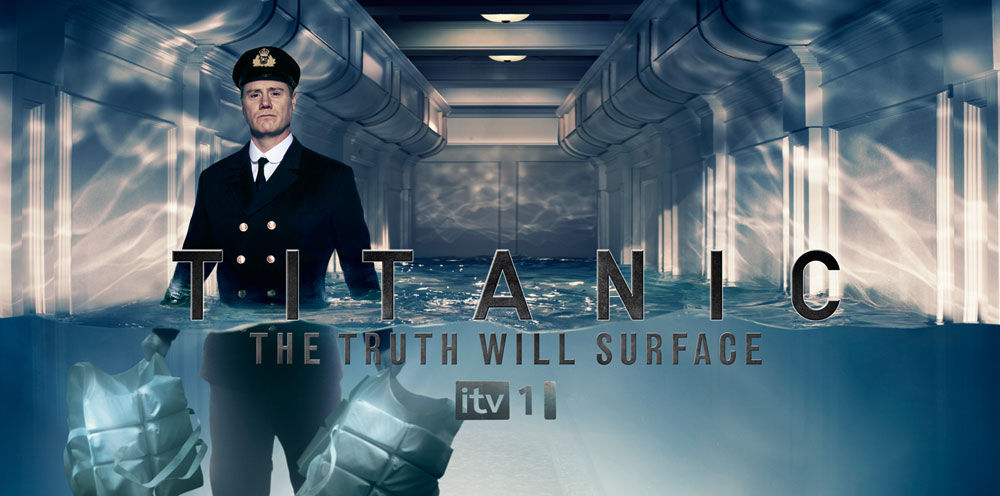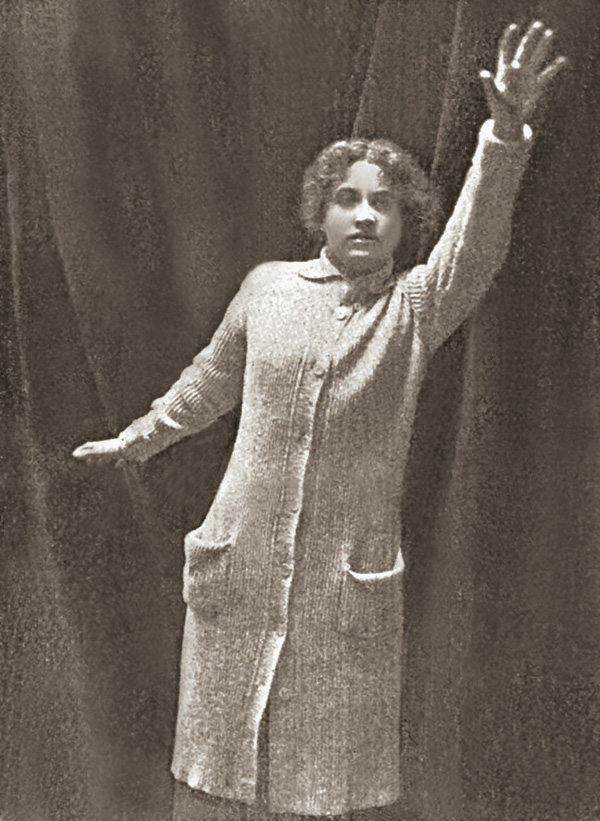
Since the R.M.S Titanic sank it has become one of the most famous ships in history. Few ships have so captured that public imagination and left such a large cultural impact that a hundred years later films were still being made of it. In the aftermath of the sinking songs were composed, stories were written and films were created to commemorate the disaster. The sheer level of public interest was unprecedented mostly because the disaster itself was unprecedented. The loss of life was tragic, but from the tragedy came stories of heroism which transcended the rigid class structure observable on the ship. The fact that many lost were of first class and the celebrities of the age simply fueled publicity.
The first film about the Titanic, ‘Saved from the Titanic‘ was released just four weeks after the sinking and was purely concerned with financially exploiting the interested public, rather than portraying any realism, even though it was co-written by and starred Titanic survivor Dorothy Gibson. Despite being on the first lifeboat to be launched, Gibson was deeply affected by the sinking, giving way to fits of hysteria throughout the night. Due to her fragile condition Gibson had a breakdown during filming and would not star in a film again. While it attracted large audiences some condemned the production for commercialising the tragedy.
It was Josef Goebbels, the propaganda minister for the Nazi party, of all people that gave us most of the conventions that we see in a great deal of Titanic films. His production, though a propaganda film, was the first to be named simply ‘Titanic’, the first to include fictional characters and storylines, but significantly was the first to convey the idea of blame for the disaster.
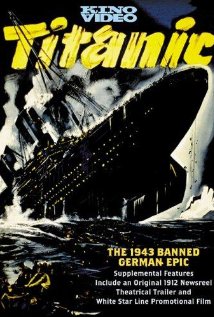
While Goebbels used the disaster to criticise the capitalist societies of Britain and America while praising the heroics of fictional German characters, he also started the trend of placing the blame for the disaster with Bruce Ismay and/or Captain Smith, claiming that in their desire to set a new speed record they were negligent in their care of the ship, specifically by sailing too fast despite warnings of ice. Both the British and American board of inquiries came to the conclusion that the tragedy was an ‘Act of God’ and that Captain Smith acted reasonably and within standard practice. Despite this, the assertion that the ship was speeding and that Captain Smith or, more commonly, Bruce Ismay were acting arrogantly and without due care has appeared in most of the productions since.
Judging accuracy is sometimes difficult given the trend to feature fictional characters and story-lines against the backdrop of the historic event. When considering accuracy for the purposes of this post I marked it out of five, with a point given for the presentation of the ship, the portrayal of historic characters/realistic interaction with fictional characters, the events of the sinking, the actions and reactions of the crew and the physical sinking of the ship.
Of the film interpretations some are good, some not so good and some are better left forgotten. Thankfully, some brave soul (i.e: me) has spent too many hours watching most of the English language versions to present a list of which ones are worth watching and which should be thrown into the sea, never to darken our screens again.
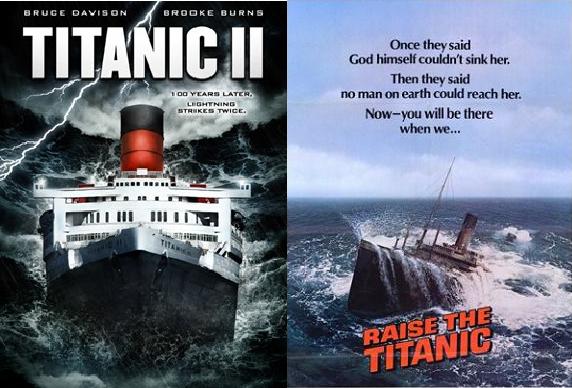
Titanic (1953)
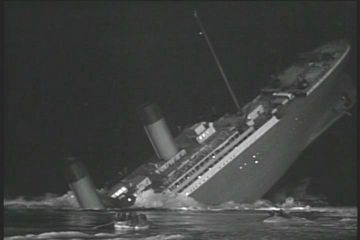
Titanic is an American production, following the 1943 idea of merging fictional characters with the actual event. As well as introducing entirely fictional stories, significant people (such as Margaret Brown) are fictionalised and shown under a different name. The writers felt that the actual Titanic stories were too fantastic to have been believed by an audience.
Plot: The story follows the Sturges family, a fictional group who have boarded the ship at Southampton. At the last minute, Richard Sturges, buys a steerage ticket, tracking down his runaway wife who has absconded with their two children. The problems in their marriage are revealed through a series of confrontations which remain unresolved by the time the ship strikes the iceberg. Various themes that emerged during the actual sinking are explored through the fictional characters; heroism, sacrifice, cowardice, wealth etc.
Accuracy: 3/5: Although there are some factual errors, the fictional characters are quite close to their historic counterparts.
You should watch this because: it is an excellent film, with some fantastic acting.
A Night to Remember (1958)
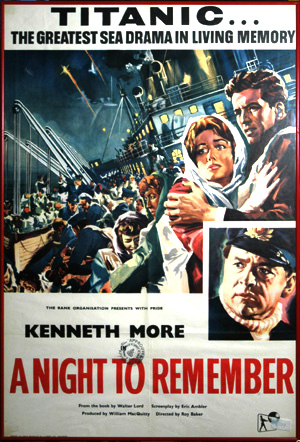
In 1955 Walter Lord published a hugely successful book, A Night to Remember, trying to piece together a factual picture regarding the Titanic‘s journey. Lord interviewed over sixty survivors and consulted all manner of personal correspondence, interviews, articles and the transcripts from both the British and American board of inquiries. Later Lord was asked to draw on the book to write the narrative for the film version.
Plot: The story of the film follows a number of passengers, some who survived the disaster, some who did not, charting their actions and reactions during the sinking. It was also the first depiction of the Californian, the ship which was infamously stopped a close distance to the Titanic and yet did not answer the distress calls.
Accuracy: 5/5. The ‘unsinkable’ element is played for dramatic effect and once more the ship sinks in one piece in keeping with the research at the time, but apart from that the film is entirely accurate.
You should watch this film because: it remains the most accurate film regarding the Titanic to date.
Titanic (1996)
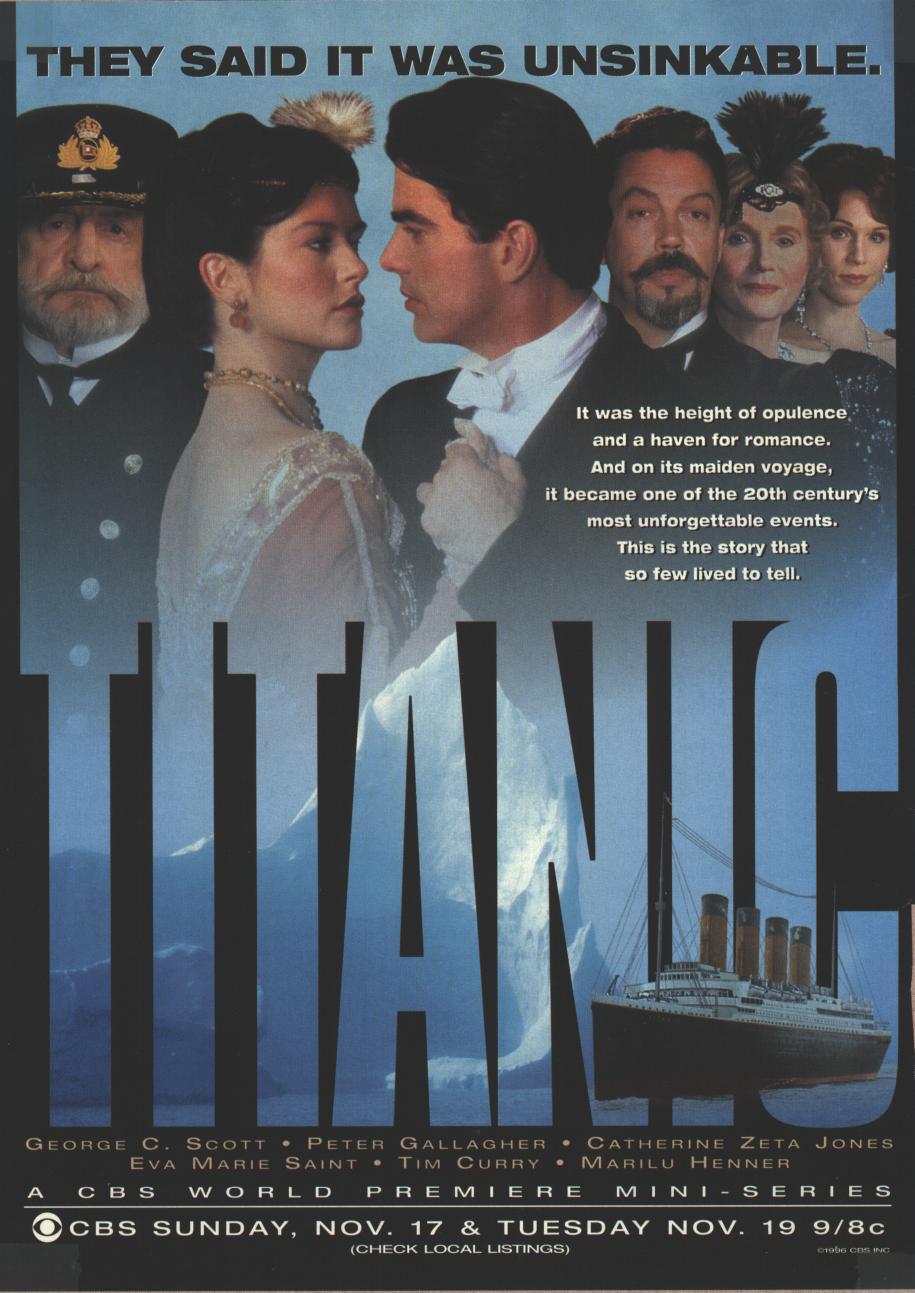
There was a large gap in Titanic films, despite renewed interest during the 80s after the wreck was discovered (not counting Raise the Titanic, which quite frankly, nobody should count). Instead of a film, this production was a miniseries made for television broadcast in two episodes. It was the first time the ship had been shown to break in two during the sinking, in keeping with the eye witness testimony of the last survivors off the ship.
Plot: The series follows a number of fictional characters and a highly fictionalised version of the Allison family. Specifically this is the story of a doomed love affair between a wealthy married woman and her former lover, a blossoming love affair between two steerage passengers and the dubious circumstances surrounding the Allison family’s maid. Part one ends with the ship hitting the ice berg, but until that point it really is immensely dull. Part two does not fare much better and by the end of it, I wanted to murder Catherine Zeta Jones’ first class protagonist.
Accuracy: 3/5 There is not much in the way of actual passengers on board, and those that are bear little resemblance to their historic counterparts, except perhaps Madeleine Force Astor who gathers a more prominent supporting role as the ship founders.
You should watch this because: actually, don’t bother. It really is amazingly dull, and for no reason considering the event itself was anything but. But mainly, the characters are ridiculous. Even Tim Curry (*swoon*) could not save it, if anything his character’s sudden change from petty thief to violent rapist is a killing blow to the film, while Zeta Jones’ morally questionable character’s actions at the end of the film are the final nail in the coffin.
Titanic (1997)
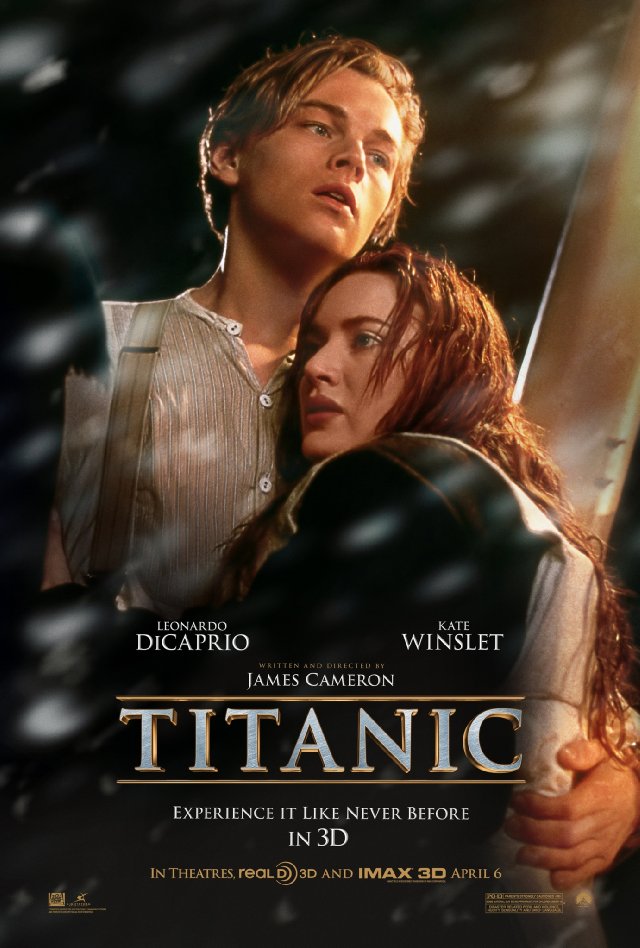
1997 saw James Cameron release the most popular and well known Titanic film. It remains one of the most expensive films ever made, one of the highest grossing films ever released and one of the most popular films of all time.
Plot: The film follows fictional Jack Dawson, a homeless American Dream metaphor American artist and his passionate affair with Rose Duwitt-Bukater, an English aristocrat struggling against first class conventions and her loveless engagement. Jack and Rose fall in love on the Titanic, but the affair is short lived when the ship strikes an iceberg. As the ship sinks, Rose has to decide whether to follow Jack, turning her back on everything she has been brought up to believe or return to traditional wealthy society.
Accuracy: 2/5 The accuracy of the film is entirely based on the presentation on the ship and the physical events of the sinking, which were more in keeping with eye witness accounts allowing for a break in the ship (though the ship broke under the water) with the floating aft section on the water for some minutes. Otherwise the actions of the crew and the historical passengers bear no relation to what actually happened, instead emulating Goebbel’s criticism of British classism in favour of, in this case, the American Dream.
You should watch this because: it’s dramatic and visually stunning, but with a very large pinch of salt in terms of accuracy.
Titanic (2012)
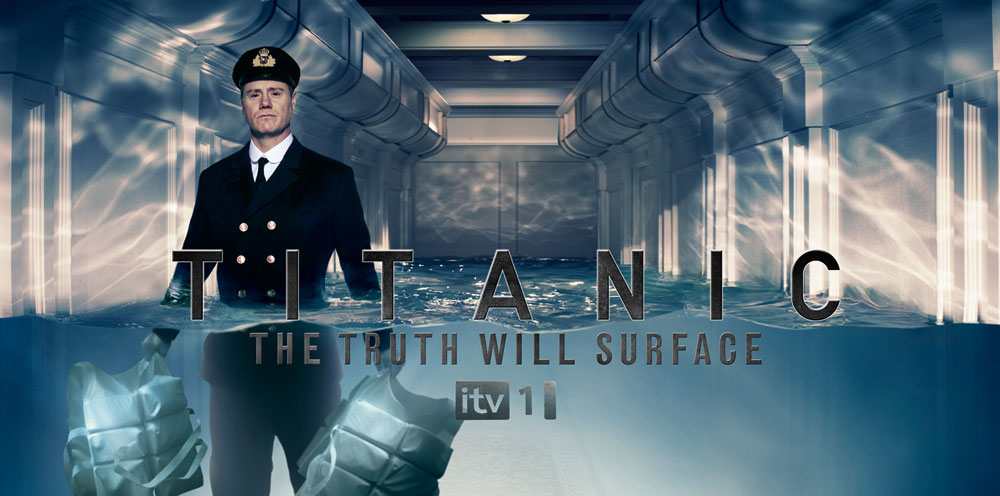
The most recent production was released to commemorate the one hundred year anniversary of the ship’s maiden voyage. It is also one of the strangest versions I have seen. Filmed in four episodes of roughly forty five minutes each, the first three episodes all end at the same point in the ship’s sinking, only to begin again before the journey at the start of the next episode, which was quite disorientating.
Plot: Each episode follows different fictional passengers across the classes, which is why the episode ends in the same place each time and restarts the timeline for the next episode. Apparently this is so that we can see the story of the Titanic from the various social strata who travelled on her, with us learning a little bit more about each story in each episode.
Accuracy: 2/5 This depiction takes an interesting stance by placing the blame for the disaster with the Captain and (in a strange turn of events) Chief Officer Henry Wilde, who have formed a clique of two among the officers, behaving recklessly and endangering the ship, which is a rather new theory and one that has no basis in fact, though in doing so the character of Bruce Ismay finally gets a reprieve from the damning portrayals he is usually condemned to.
The accuracy is greatly affected (negatively) through the production’s desire to demonstrate the social issues of the time. The film draws on a great deal of contemporary issues such as the suffragette movement, Irish Home Rule, the Latvian revolutions, racism, religious differences, classism, terrorism and an anarchist movement and suggests that all of these issues were rife aboard the Titanic. So much so that the Italian crew are all locked in a room and left to drown by the English crew and women of first class refused to get into a boat with ‘lesser’ passengers, none of which actually happened. While these social issues may have been discussed among the gentlemen in the smoking room, they certainly had no bearing on the sinking of the Titanic and even less on who would survive or not. The suggestion that a part of the crew were left to die because of their race is utterly ludicrous and surprising in a production supposedly commemorating the disaster.
You should watch this because: … … … … I can’t think of anything. I think it tries to accomplish too much and fails in the process. It also repeats certain scenes in each episode, supposedly because now you know a little bit more about the situation, but that does not take away from the fact that you are watching a second passenger shouting at a first class passenger for her extravagance four times, no matter how ‘developed’ it is.
All in all, if you want to watch a good Titanic film, watch ‘A Night to Remember’ or if fiction is your thing, the 1953 Titanic. It does not have the CG of James Cameron, but it is believable, far more accurate and does not have the less than subtle American Dream metaphor making the English look like snobs throughout.
Follow us on Twitter @HistoryRemaking
Or on Tumblr

